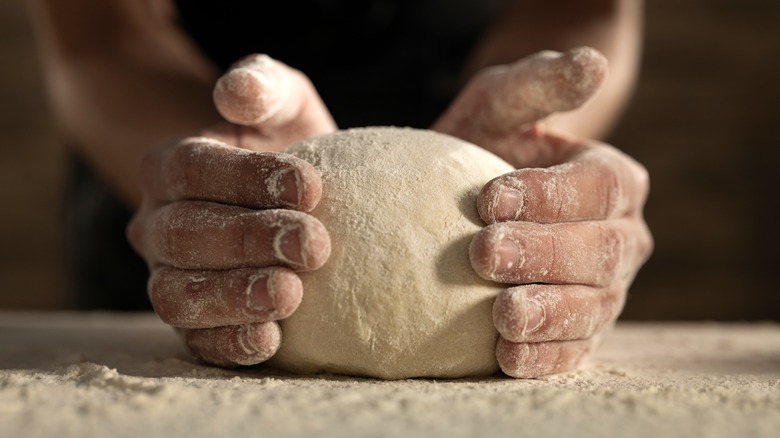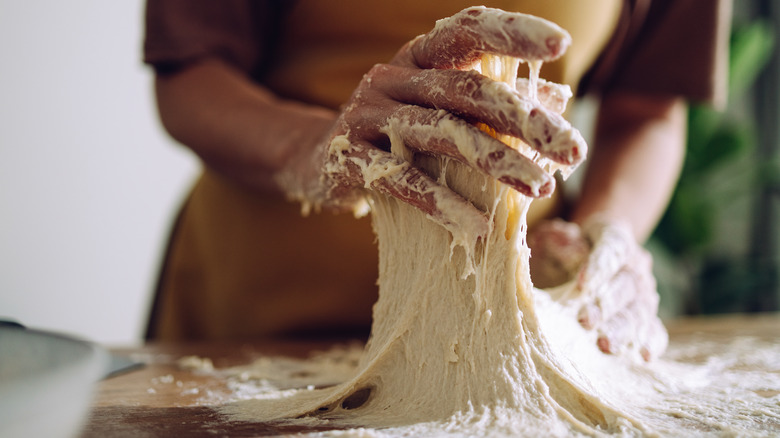Keep Measurements In Mind When Adding Wet Ingredients To Bread
Baking bread often comes down to a game of precise measurements, and that's especially true for wet ingredients. At its core bread is just water, flour, yeast, and a bit of salt — so the amount of liquid in your bread has a huge effect.
Normally, bread recipes are finely balanced to account for this, but once you move beyond the basics and start adding things like fresh fruit to a bread dough, you are also adding unaccounted-for moisture. Those ingredients will seep out liquid as they cook, throwing off the ratio of water to flour in your bread. So if you do want to add other elements like a soft, moist cheese, or zucchini, you need to adjust the rest of your recipe.
If you are adding solid food with a high water content, which is most fruits and vegetables for example, treat them like they are ½ water. This means you should measure how much you are adding, ideally by weight, but by volume if you don't have a scale. Then, subtract ½ of that amount of water from your bread. So if you add 100 grams of banana, subtract 50 grams of water from your initial recipe to account for the liquid it will release. By volume, adding 1 cup of banana would mean subtracting a ½ cup of water.
Extra liquid can leave bread soggy and undercooked
The amount of liquid in bread is referred to as hydration, and it has tons of effects on the finished loaf. Making a bread more wet will change how you handle it, the crust, the interior texture, and even the taste. In fact, the precise amount of liquid is so important that the ratio of liquid to flour is measured down to the percentage and is even used to classify the type of bread.
Just a 5% or 10% increase in the hydration ratio can mean you need to do things like cut down on the rising time or bake your bread longer or at a higher temperature. At worst, it could mean soggy, undercooked dough in the center of your loaf or around the wet ingredients.
All those changes are why you want to keep your hydration ratio stable. Other liquids like milk or coffee count the same as water, but some wet ingredients like eggs are not fully liquid, so you don't need to remove as much water if you add them. Fruits and vegetables are usually 70% to more than 90% water, but not all of that liquid will cook out, which is why the 50% ratio is a good general barometer. Having to do all that math may not be fun, but it will make your bread better as it opens up a world of experimentation with different tasty additions.

